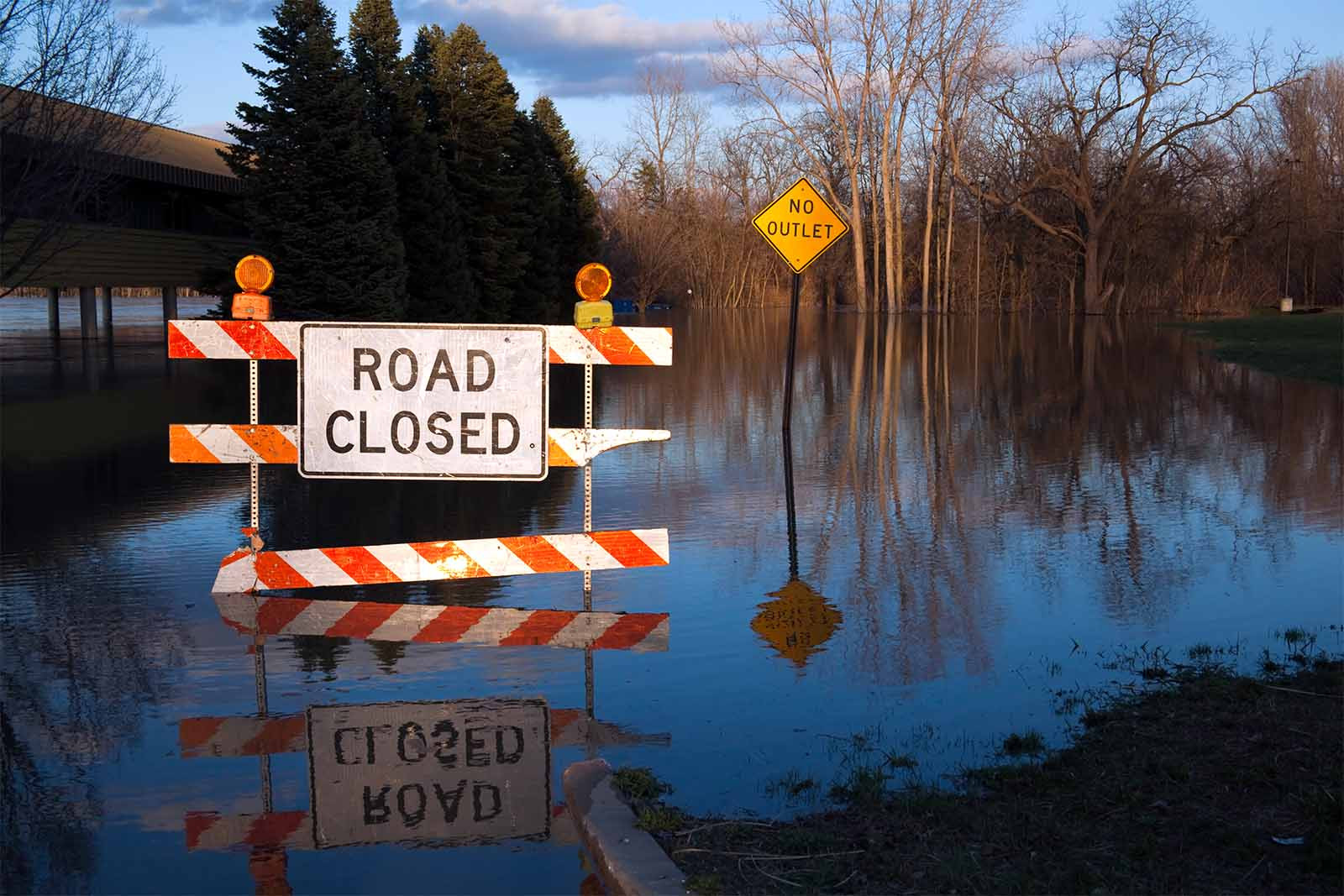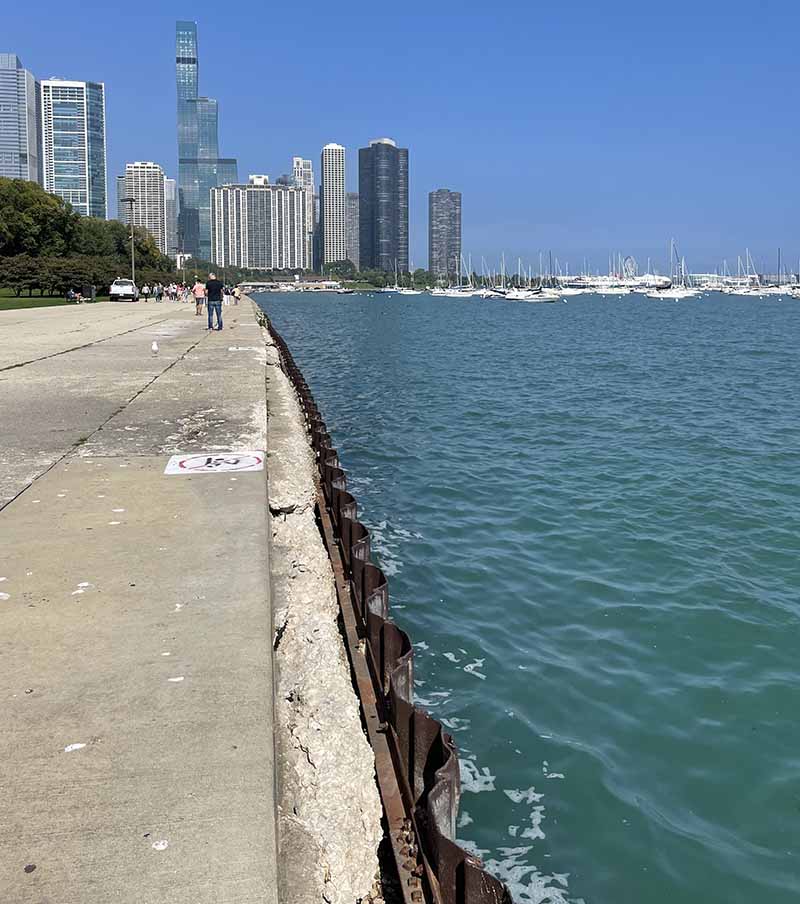
The sheer size of the United States and its wide variety of climates means it’s vulnerable to many kinds of natural disasters. We witness them every year: hurricanes and tropical storms, coastal and flash floods, earthquakes, tornadoes, wildfires, snowstorms, droughts, sinkholes—the list could go on. Although completely preventing these disasters is practically impossible, we can improve our ability to prepare for, withstand, and recover quickly from future disruptions in the planning and implementation stages of transportation projects. The ability to plan and build for these extreme events is known as resilience.
Resilience is no longer a novel field, and the need for resilience is growing across all industries and areas of public life. To improve the resilience of our transportation systems and build resilience into infrastructure projects, the Federal Government has launched new funding programs. The U.S. Department of Transportation’s new PROTECT Discretionary Grant Program is one such program for which we’ve helped our clients develop seven applications in the past year alone.
A resilience-oriented benefit-cost analysis (BCA) is often a requirement for PROTECT grant applications. In particular, the Resilience Improvement Grant and the Community Resilience and Evacuation Route Grant subtypes require BCA. A BCA will help make your grant application stronger by expressing the monetary feasibility of interventions, ideally backed by guidance and materials from trustworthy research or government institutions.
While BCA isn’t new to traditional transportation investments, it’s new to transportation resilience projects. This means that many applicants are relying on experimental tools and resources to fulfill the BCA requirement. These new tools can often present one or both of the following challenges: inadequate methodology or poor-performing results (i.e., a benefit-cost ratio below 1.0 or too close to the zero bound, which means the benefits do not outweigh the costs, or there are almost no benefits).
Developing a Strong BCA for PROTECT Grants
So, how do you ensure your BCA methodology will yield the best results? It should consider the following two questions...
Why do you need PROTECT-ion in the first place?

The City of Chicago installed steel sheet piling along the shores of Lake Michigan to prevent erosion as a result of rising water levels and storm-surge outcomes.
Your priority should be identifying what’s creating risk in your region. What are the major weather events or natural disasters that can be expected? What are their corresponding likelihoods? Convey these likelihoods as annual, independent probabilities equal to the reciprocal of the occurrence period. For example, major flooding that is expected to happen once every 30 years has a chance of 1/30.
What are you actually PROTECT-ing?
It’s equally important to outline the benefits of the project, which includes avoided costs. Knowing what’s at risk (and how its condition could be improved if the project is undertaken) should be the baseline of your analysis. How much damage would major weather events or natural disasters cause to your infrastructure if they took place?
In your application, you should include estimates of the following benefits:
The avoided cost of emergency maintenance, repair, or replacement while comparing the Build and No-Build scenarios.
After a hazardous event, the level of infrastructure damage varies depending on the previous Build or No-Build decision. The level of damage corresponds to maintenance costs (like replacing the facility with a new one if there was a total loss). In general, it’s best to name a monetary value for each disaster under each scenario or, at least, assume a percentage of damage that increases with the magnitude of the catastrophe.
For example, if the project consists of improving a bridge to make it flood-proof, the No-Build scenario cost of emergency maintenance, repair, or replacement would be related to the cost of building a new bridge or undertaking major repairs to make it operational again after flooding. If the Build scenario included having a bridge completely unaffected by flooding, the benefits would be the difference between both scenarios. In this case, it would be equal to the No-Build associated costs, since the Build associated costs would be none… the difference is what matters!
The avoided diminished use of the facility while comparing the Build and No-Build scenarios.
Major catastrophes incur higher costs to mitigate and greatly limit the utilization of assets once affected. For example, let’s say that under a No-Build scenario, three out of four lanes of a road could become unusable after a catastrophe. The one remaining lane would likely lead to congestion or detours.
Under the Build scenario, having all four lanes available would result in the benefit of avoiding its diminished use. FEMA considers avoided delays in emergency response services to be a benefit as well. Reduced downtime of direct routes to and from critical services like hospitals and fire stations is an important benefit to highlight.
Outlining these benefits in your application will help you paint a clear picture for reviewers, and assigning a monetary value to each scenario will bolster your call for action. But there’s even more that you can do to highlight resilience benefits in a grant application!

Rhode Island DOT leveraged nature-based solutions in their right-of-way. These native flowers are low maintenance and help with drainage during storms when installed at a large scale.
Think Outside the Box
Beyond what we’ve already suggested, you may want to get creative with your application. The PROTECT program has a repository with access to EPA, FEMA, and other resource compilations to inspire you. For example, one resource shares how to consider nature-based solutions (NBS). NBS benefits include things like improved water quality and supply (groundwater collection while filtering out sediments, requiring lower or no treatment costs), heat island effect reduction due to evapotranspiration, recreational benefits from NBS landscaping and mitigation capabilities, and more.
Other side benefits will vary depending on the project's nature, such as benefits related to avoided power outages (reduced downtime, repair costs, and/or electrocution risks) or property damage.
NBS benefits are currently quantified using 10 to 15-year-old guidance for green infrastructure. However, NBS are becoming increasingly popular, so many people in the field are working to optimize existing guidance and adopt new techniques to better quantify these benefits.
Get in Touch
A strong BCA can help you take your PROTECT grant application to the next level, and we’d love to help you do it! Our transportation resilience and grants teams are renowned experts with a proven track record of success. We’ve helped our clients secure over $1.5 billion in grant funding to date, and our resilience team has deep federal, state, local, and regional expertise. We’re also currently leading the National Cooperative Highway Research Program (NCHRP) research project, “Measuring Impacts and Performance of State DOT Resilience Efforts.”
If you’d like to learn more about us, check out our resilience and grant support pages or contact us today!

Suseel Indrakanti, AICP
Principal, Practice Lead - Resilience and Sustainability